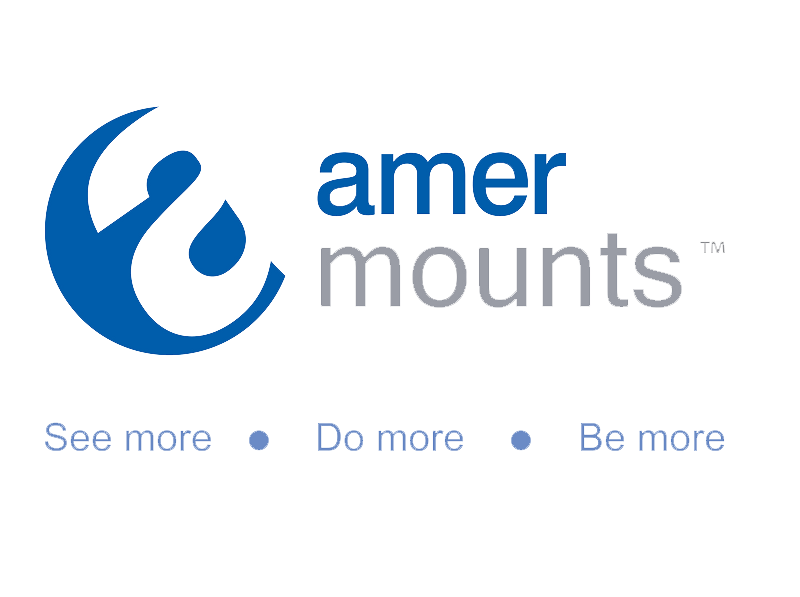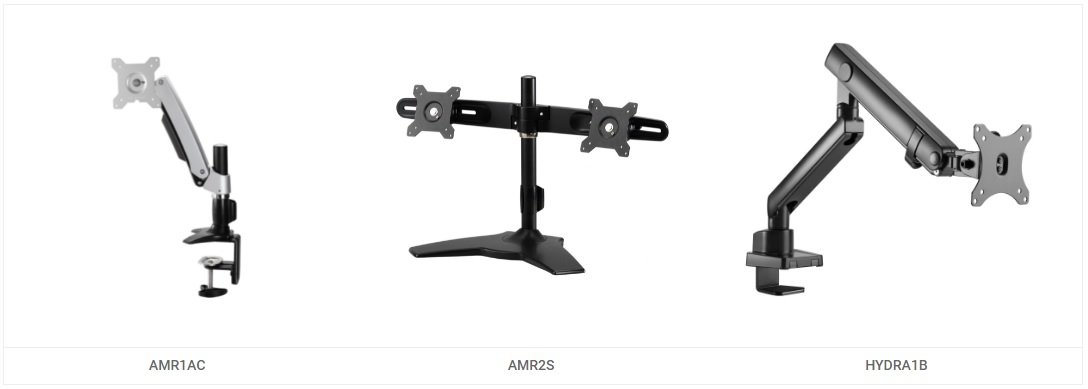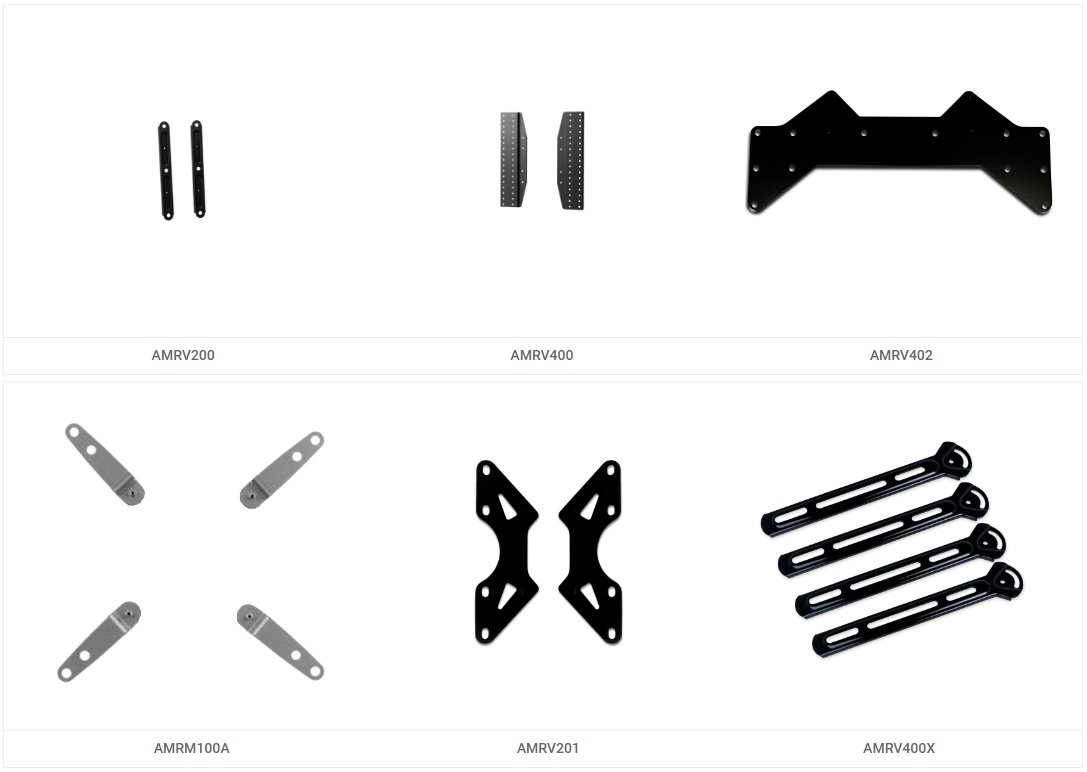VESA Standard Monitor Mounting Guide
VESA Standard Monitor Mounting Guide
Amer mounts are compliant with the Mounting Interface Standard established by VESA©.
Remember when choosing your mount, use the Display Weight and Hole Mount Pattern as the primary criteria for determining compatibility. Screen Size is only a factor when using multiple monitors. The table above reflects VESA guidelines for displays.
VESA Mount Interfaces
Amer Mount products are engineered in accordance with the Flat Display Mounting Interface (FDMI) Standard, otherwise known as the Mounting Interface Standard (MIS), defined by VESA. When choosing a monitor, look for VESA Mounting Compliance for ease of attachment to any Amer Mounts wall mount, monitor arm or other VESA-compliant mounting solution.
The VESA standard defines dimensions of a display’s four-hole attachment interface and the screws used to fit those holes. It also dictates the placement of the hole pattern on the back of the display. For attachment to VESA mounts, ideally the hole pattern should be centered on a display’s back (denoted in a VESA label with the letter “C” as in VESA FDMI MIS-D, 100, C). A center-positioned pattern minimizes the torquing force applied to the mount, allowing it to hold a heavier load.
Today’s flat panel displays commonly use three variants of the standard
The first is VESA MIS-D, 100/75, C compliant displays are equipped with either a 100 x 100 mm or 75 x 75 mm square hole pattern, using M4 screws for attachment of the mount to the display. This is the most common interface for monitors weighing under 30 lbs (14 kg); small TVs and computer monitors usually feature the VESA MIS-D interface. Amer Mounts carries a comprehensive line of MIS-D-compatible products.
Amer 100/75 VESA Mounts include:
The second is VESA MIS-E, C compliant displays are equipped with a 200 x 100 mm rectangular hole pattern, using M4 screws for attachment of the mount to the display. Mid-size displays sometimes use this interface; typical displays in this class weigh less than 50 lbs (23 kg). Amer Mounts carries MIS-E mounts as well as an adapter kit that converts an MIS-D mounting plate to hold an MIS-E display.
Amer 200/100 VESA Mounts include:
The third is VESA MIS-F, C compliant displays have varied hole patterns that are spaced in 200 mm increments (e.g., 400 x 200 mm and 600 x 400 mm are both MIS-F hole patterns). M6 or M8 screws are used to attach the mount to the display. Heavier TVs with screens greater than 32″ in size usually follow this variant. In practice, many displays in this class deviate from the standard in minor ways. For example, a 300 x 300 mm hole pattern is not uncommon. This is why most Ame Mounts brackets for MIS-F-class displays are designed to handle irregular hole patterns.
Amer MIS-F VESA Mounts:
Amer VESA Adapters
Amer sells a full line of VESA adapters that allow you to convert your existing VESA mount. This allows you to use your current mount, and then make it compatible with a larger VESA standard size. Common use for this is to mount a TV on an existing wall mount, or when you upgrade to a larger screen You still want to make sure the new TV is under the supported weight specification of the mount you are using.
Attaching Apple Displays to VESA Mounts
Most Apple displays are not VESA compliant. To attach a non-VESA-compliant Apple display to a VESA mount, you may need an adapter bracket. Apple offers iMac computers with a built-in VESA interface. However, most iMac models from late-2012 to present cannot be retrofitted to include a VESA interface—the built-in VESA interface is only available at the time of purchase. If a VESA adapter is not available, choose a mount with a proprietary Apple interface or use a custom adapter bracket. Update: Apple’s iMac Pro is now offered with the option of a VESA interface accessory that can retrofit the computer for attachment to a mounting solution.







